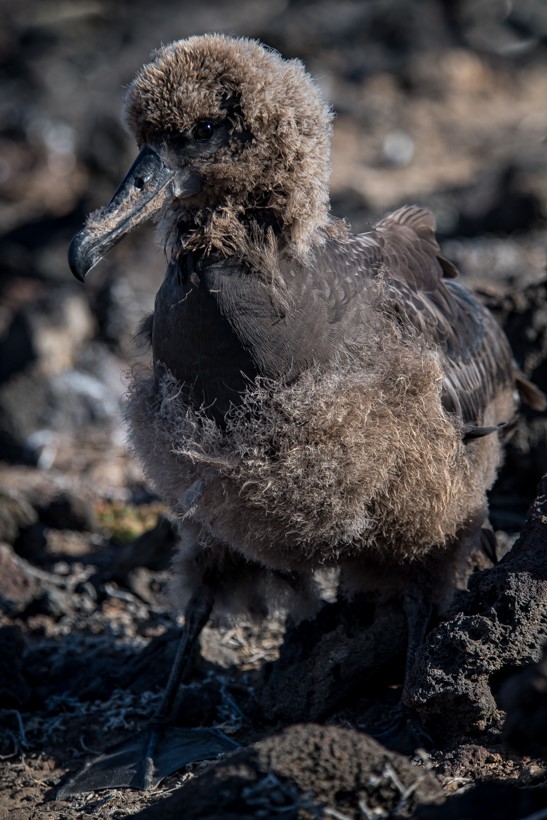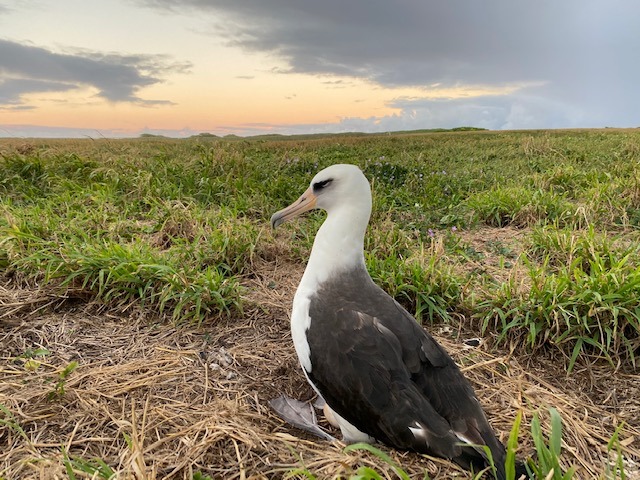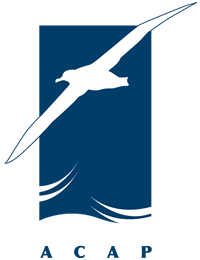
International cooperation: a translocated Black-footed Albatross chick on Mexico’s Guadalupe Island
The 2025 U.S. State of the Birds report has been produced by a coalition of leading science and conservation organizations including the American Bird Conservancy, Cornell Lab of Ornithology, Ducks Unlimited and National Audubon Society. It reveals continued widespread declines in American bird populations across all mainland and marine habitats, with 229 species requiring urgent conservation action. Information on seabirds shows that American seabird populations are in steep decline, with Hawaii and Alaska populations down between 55% and 95% in recent decades. Threats causing declines identified include predation of seabirds and their eggs by invasive nonnative species, bycatch in fisheries, contaminants such as plastics pollution, habitat loss, and infectious diseases.

A Laysan Albatross incubates its egg in Hawaii’s James Campbell National Wildlife Refuge, photographs from Pacific Rim Conservation
However, the seabird section does report more positive news for two North Pacific albatrosses as shown by the following extract:
“One promising strategy for protecting seabird populations from sea-level rise and storm-surge events has been translocation—moving seabird breeding colonies to higher ground.
A project in Hawaii—conducted by the nonprofit group Pacific Rim Conservation, in collaboration with the U.S. Navy and U.S. Fish and Wildlife Service—moved seabirds from low-lying areas in the Midway Atoll National Wildlife Refuge, Tern Island, and French Frigate Shoals to high-island habitat at the James Campbell National Wildlife Refuge on Oahu. The translocation area on the refuge included a mammal predator exclusion fence, so the newly moved seabirds don’t fall victim to non-native predators such as rats and mongoose. Today there are four translocated species nesting on the refuge—Laysan and Black-footed Albatross, as well as Bonin Petrel and Tristram’s Storm-Petrel.
Another seabird translocation project is offering a refuge from rising seas for Black-footed Albatross populations in the eastern Pacific Ocean. A partnership between government agencies and nonprofit groups of the United States and Mexico is moving albatross eggs and chicks from the Midway Atoll National Wildlife Refuge to Guadalupe Island off the coast of Mexico. The project began in 2021, and by 2024 the first chicks that fledged from Guadalupe returned to the island as 2- and 3-year-olds—marking early success in the effort to establish an albatross colony on higher breeding grounds.
According to the Seabird Restoration Database, there have been 851 seabird translocation and social attraction projects worldwide, with a very high success rate—76% of seabird species showed a positive response to these efforts. About 40% of these projects were conducted in U.S. islands and coastal areas, more than any other country. Given the steep threats facing seabirds, more translocation efforts are needed, and the high success rate shows that these efforts are a sound investment in securing seabird populations for the future.”
ACAP Latest News has been following the albatross (and other) translocation efforts led by Pacific Rim Conservation; access previous articles from here.
Download the full report and read more here.
John Cooper, Emeritus Information Officer, Agreement on the Conservation of Albatrosses and Petrels, 13 September 2025

 Français
Français  English
English  Español
Español